How our DNA stores information about our ancestors
I have already told in detail in another article , but I must repeat myself .
Each child receives chromosomes from parents: the Y chromosome only from father to son, and the X chromosome from mother to sons and daughters, but sons do not transmit the X chromosome further, more precisely, sons pass on to their daughters the X chromosome of their mother (grandmothers daughters), but then, when transmitted to descendants, this "paternal" X-chromosome is inactivated . And each DNA carries information about all your ancestors regardless of gender, but with each new generation, the percentage of information about older ancestors is diluted with information about new ones, conventionally every time it is divided by two. Hence, it is possible to make a test and identify the coincidences of DNA particles between different people. Actually, this will be discussed below.
What kind of DNA tests are there?
DNA tests can be divided into 3 types: male line test (Y-DNA), female line test (Mt-DNA), autosomal test (AU-DNA).
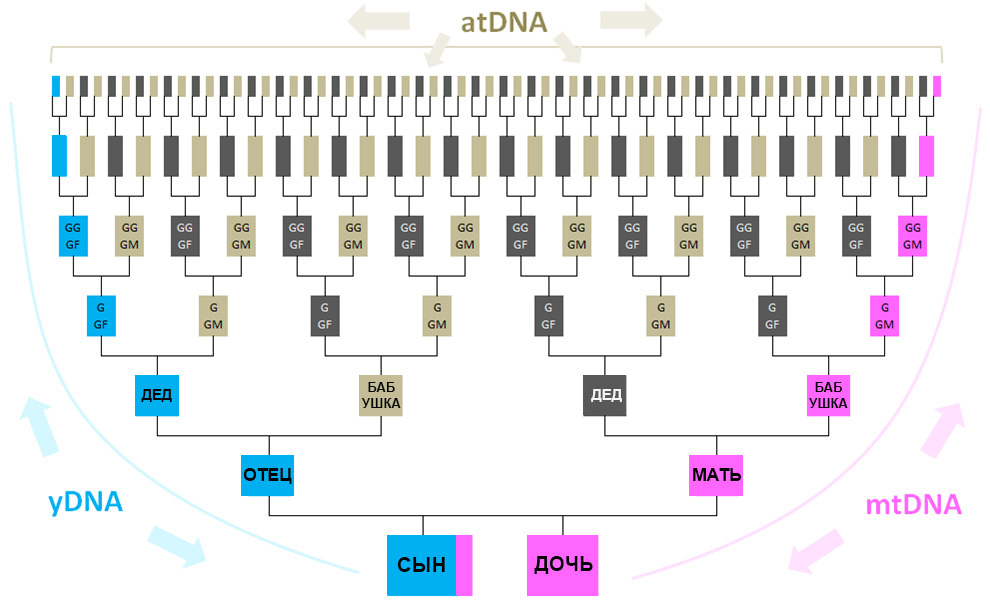
Male test (Y-DNA) - allows you to determine a DNA branch tens of thousands of years ago with its intermediate mutations, which allows you to calculate the descendants of one ancestor in common with you at different boundaries (conventionally 300 years, 1000 years, 5000 years), each time it happened DNA mutation and "branch" was divided into sub-branches. The test examines both STR markers, which change over time and these changes are transmitted to sons, and SNP snips, which take into account single changes in the DNA sequence and allow you to accurately determine the haplogroup.
Female test (mt-DNA)- they examine the genome of mitochondria and also look for mutations, and after comparison with thousands of other samples, they can determine the haplotype and haplogroup of the tested person. This test will allow you to determine the origin of different people from the same maternal ancestor, but it is also impossible to understand from this data whether these people are cousins, for example, or six-cousins, as in the case of the Y-test.
Autosomal test (au-DNA or at-DNA)- the most popular. This is a common test for all your ancestors at once. It finds a match with all tested, with whom you will have a common ancestor in about 8-10 generations. Why is it so imprecise? There are many nuances, for example, in percentage terms, fourth cousins on the same level from a common ancestor and a second cousin with a difference of two generations will have approximately the same percentage of DNA part coincidence. It all depends on the age of the person being tested, more precisely from the number of generations to the common ancestor.
How much do DNA tests cost?
To begin with, most of the labs on the market are overseas labs, so prices will be in dollars.
The most popular and most readily available test is the autosomal test .
Its cost is usually around $ 80. But in Russian laboratories, the cost varies from 10 to 20 thousand rubles.
On sales days, tests can be bought for $ 50, and sometimes even cheaper. I even bought for $ 39 with free shipping (when buying from 2 pieces).
Next in cost is the Female test (mt-DNA) .
Its cost is much higher - about $ 160. Both men and women can make it for themselves and trace the female line.
Well, the most expensive is the Male test (Y-DNA)... It can only be done by men and trace a straight male line.
The cost of the male test varies depending on the number of markers tested. The more markers your test contains, the more accurate and naturally more expensive it is.
The cost of such a test starts from about $ 120 for 37 markers and for a full test of 700 markers, you will pay $ 450.
There are options for "combining", you can order only 37 STR markers, and then investigate the SNPs you need, or you can immediately pay for all possible STRs and SNPs and not suffer, but this is a separate topic for thought.

Since most of you and I do not need to buy a test "tomorrow", you may well make a purchase on discount days, which are quite frequent. The biggest discounts are traditionally for "DNA Day" at the end of April and for "Black Friday" at the end of November. The discounts are quite tangible!
Which DNA test is better to buy and why
As I said earlier, there are many laboratories that sell tests and provide analysis. How to choose a laboratory and which test is better to buy?
There are several factors here: ease of purchase, size of the other tested database, price.
Let's start with the price of the test. The
Russian companies "Atlas", "Genotek", "Gentis" are convenient, they sell tests inside the country, deliver them to your home, but the price is 10-20 thousand rubles per test.
Foreign companies provide a similar service for 3 or more times cheaper. True, the Russians are trying to cram add-ons like "Health" into the test.
Ease of purchase
Foreign companies allow you to buy a test "online" with home delivery, and we all got used to ordering on the Internet for a long time. But there are nuances in the form of changing Russian legislation, which begins to prohibit foreign companies from collecting material, or the companies themselves do not sell directly to Russia for their own reasons. You need to have a little knowledge of ordering tests through anonymizers and proxies in order to get around all these supposedly "limitations". But the cost is several times less. Well, the waiting time for the parcel, sometimes a month or more.
Database of tested
This is one of the most interesting parameters because whether the test is at least 3 times cheaper in one company than in the second, provided that the database of those tested is 10 times larger in the second company, I will choose the second company. In addition, there are laboratories that are more popular with Americans, for example, and there are laboratories that are more popular in the post-Soviet space, Russia.
Ability to "update the test" without re-passing it
Many companies allow you to take one test, keeping the remainder of the biomaterial in their stores for several years. If later you decide, for example, to add a Y-DNA analysis to the autosomal test you have passed earlier, then you only need to pay extra (for example, the “FamilyTreeDNA” laboratory) and the analysis will be done. You do not need to donate the biomaterial again. Other companies (for example “MyHeritage”) do not provide this option.
This is especially valuable, given that people tend to age and die, and you may have a desire to update the test and do a deeper analysis later, well, or you have such a desire, but now there is no money for this and you want to do different analyzes in stages.
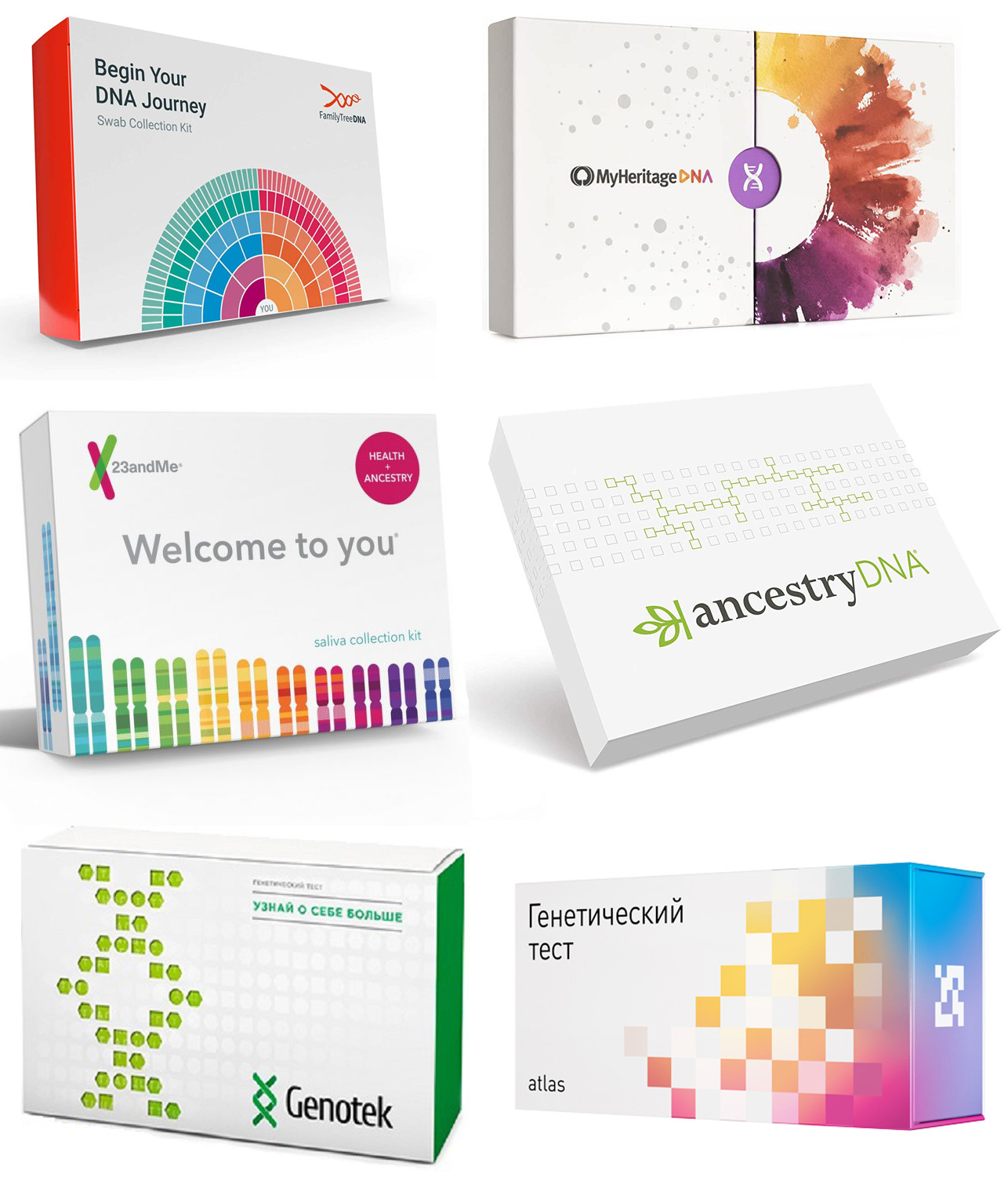
Summary of Choosing an Autosomal DNA Test
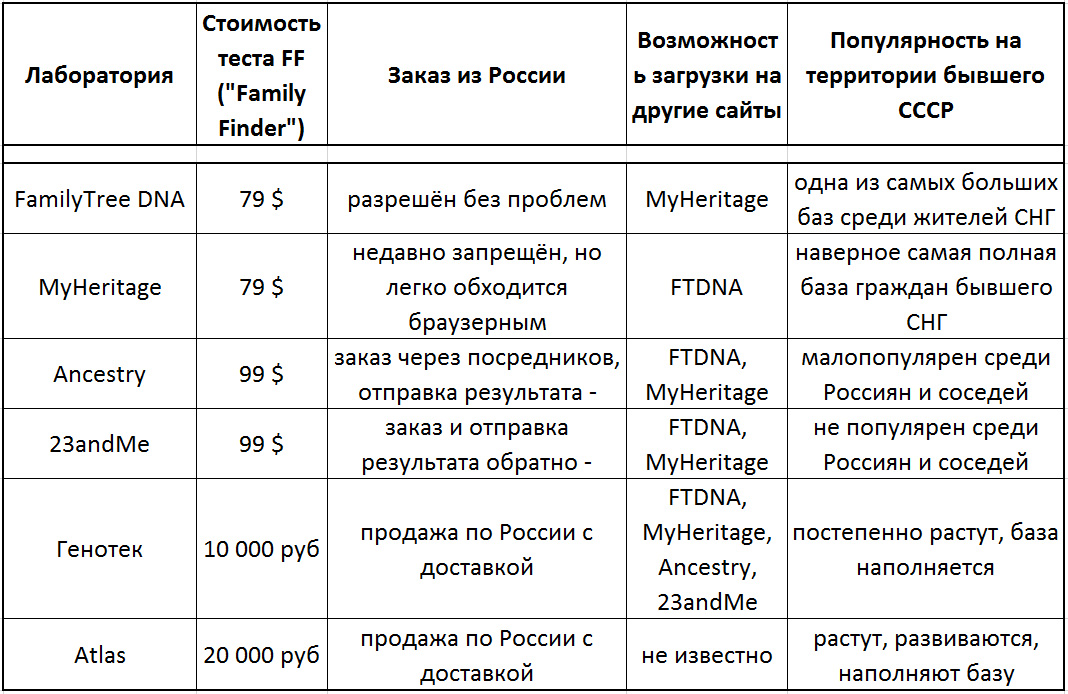
There are other laboratories, but the ones mentioned are enough for you to choose from. The cost of the test is indicated "basic", no discounts, cheaper on sales.
The most logical, in my opinion, is the purchase of a test from FamilyTreeDNA for reasons of price, ease of purchase, the ability to upload the result to other sites and the ability to then upgrade the test without re-passing it. You can order from “Ancestry” or “23andMe”, getting into their databases closed for import, and then upload to more popular ones. Ordering through an "intermediary" is not a problem, just some unnecessary gestures with registration on an intermediary site (such as "Shipito"), payment nuances and others. More about this in another article.
What tests "to the maximum" can be done by everyone
Using the example of the FamilyTreeDNA laboratory, I will show you which tests can be ordered to the maximum for a man and a woman, and how much it costs approximately without discounts.

For women, the maximum is "autosomal" + "female line".
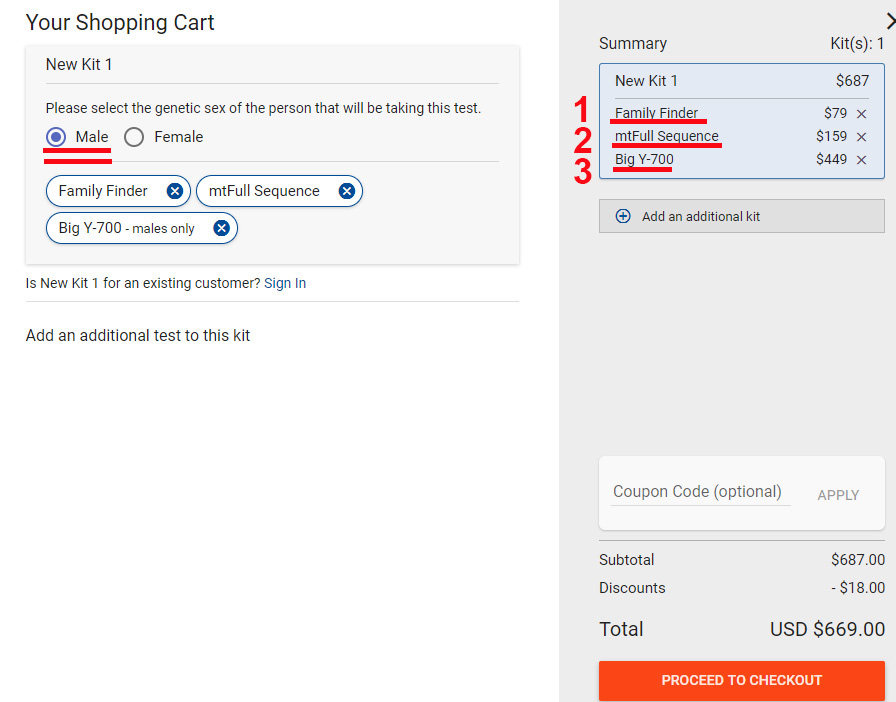
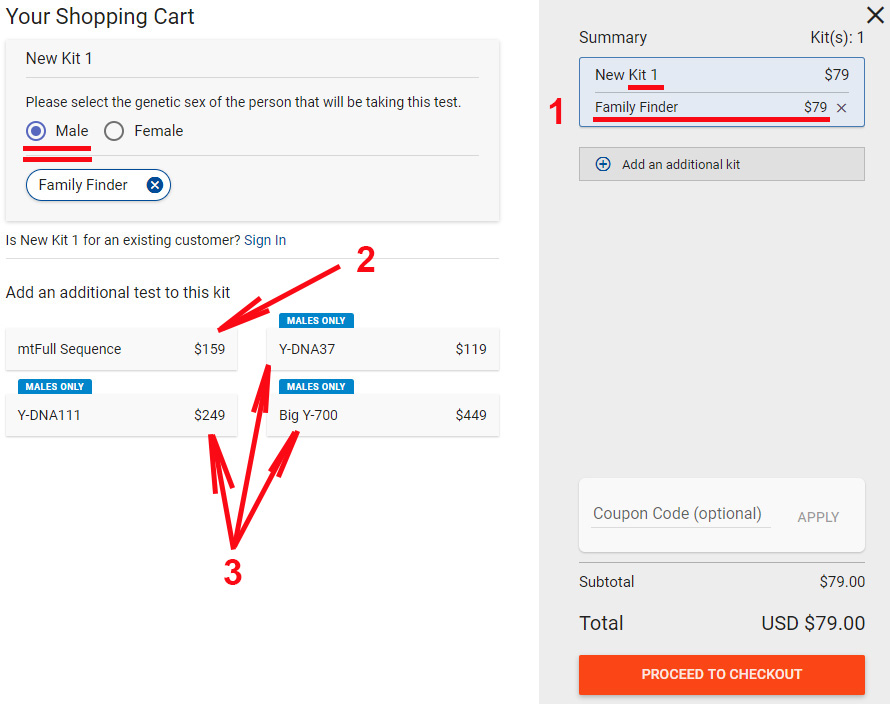
For men, the maximum is "autosomal" + "female line" + "male line". Alternatively, instead of the full "masculine" one can take on fewer pure markers, i.e. get a little less depth of study.
How do you compare DNA tests done in different laboratories?
An important addition that must be mentioned. It is possible to compare tests of different people made in any laboratory. Anyone who does tests can additionally upload the test to sites that compare everyone to everyone, regardless of the laboratory. The problem is that not everyone does it, but in vain.
If your test is "Family Finder" then www.GedMatch.com will help you.
If you have done the "male" test Y, then you must participate in the www.yfull.com project .
But this is all to the question of the results, but first you need to buy a test , wait for receipt, hand over the biomaterial, send the test back to the laboratory and wait for the result to be ready in your personal account on the website.